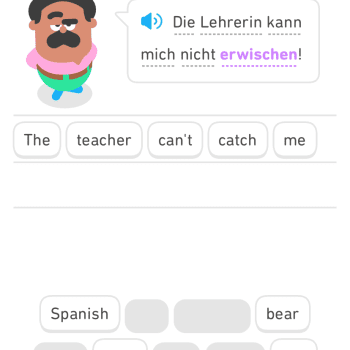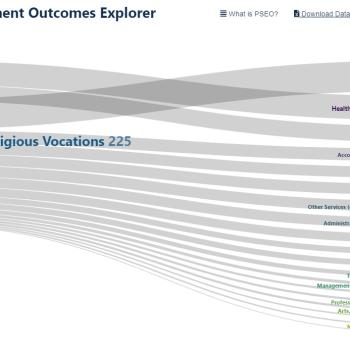Those who know me personally or through my blog know that I love language learning, as well as having a passion for gamification. You also know that I’m teaching a course that includes a unit on China this semester, and that I’ve been increasingly enjoying audiobooks. And so you won’t be surprised to learn that, putting all of the above together, I looked to see what language-learning resources my public library has for those who want to learn Mandarin. One that I came across was called Dr. Blair’s Mandarin Chinese in No Time. I hadn’t heard of it before, and so I confess there was a bit of a lag between when I first checked it out and when I started listening.
When I pressed play, I was confronted not with the stereotypical language course beginning, but with a story. I was in a boat off the coast of China, asleep, when I was awoken by what sounded like gunshots.
My initial reaction at this point was that perhaps the Libby app had given me the wrong book. But I kept listening and the story continued:
I contacted the U. S. consulate and learned that pirates had seized some sort of national treasure and taken hostages. I happened to be the closest American citizen to what was transpiring, and so the U.S. official on the phone said they would need me to negotiate with the pirates. I don’t know Chinese, but they assure me that won’t be a problem. If I follow their method, I can learn enough to negotiate with the hostage-takers.
I was wowed. I’ve found some really great language-learning resources in the past that had gamified elements in them. But this one was essentially an immersive role-playing experience.
How had I not heard of Dr. Blair’s method before? Had you?
While it would be easy for someone who wasn’t already motivated to learn Mandarin Chinese to dismiss this as a gimmick, for anyone with a genuine desire to learn, this narrative-immersive approach seems like it would have the potential to sustain that enthusiasm and engagement in ways that facilitate learning.
Of related interest, a recent “People’s History of Board Games” highlighted that “many games through history have been about making the world a better place, from critiquing capitalism to fighting for women’s rights.”
Values at Play has lots of things related to games and learning (a colleague drew this to my attention). I blogged recently about a connection between the class I am currently teaching and the motivation for gamifying:
And here’s a call for papers that is connected with this theme:
https://relcfp.tumblr.com/post/187027802306/nemla-2020-call-for-papers-living-in-someone














